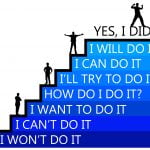.jpg)
Recognizing the signs of an abusive relationship
The indicators of an abusive relationship can be identified by observing for patterns such as a partner putting down the other in front of others, controlling finances or forbidding communication with friends and family. Signs may also include physical harm, coercion, or degradation. Understanding these early warning signs of an abusive relationship is essential to prevent it from escalating.
To identify abuse upon initial contact, partners can watch out for passive-aggressive behaviors in their partner, including sulking or blaming them for things outside their control. Additionally, vigilance related to pressure tactics from the partner that force them into accepting unreasonable demands should be noted.
It’s critical to keep track not only of the overt signs but also the subtler ones such as evident fearfulness while communicating with their partner or acting out-of-character. Recognizing that every abusive regime has unique features and learning what types of abuse tend to indicate potential danger would help in identifying danger early on.
It might also benefit those experiencing abusive relationships to speak directly with mental health professionals who’ll assist them in creating safety strategies tailored to their lifestyle & situation—such as finding safety shelters or support groups.
In addition, counseling may serve as an effective way of resolving issues within the partnership and preventing emotionally hurtful events from repeating themselves. Couples’ therapy can inspire understanding between both partners while exploring the root cause behind contentious behavior; this procedure equips couples with effective communication skills and other conflict-resolution methods that encourage peaceful and respectful interaction among them.
Remember, trying to fix an abusive relationship on your own is like trying to perform brain surgery on yourself – seek help and support before it’s too late.
Seeking help and support
Seeking Assistance and Encouragement in an Abusive Relationship
When in an abusive relationship seeking assistance and encouragement is crucial, it can be the first step towards ending the cycle of violence. Speak to a trusted friend or family member, contact a domestic violence hotline or seek medical help. Professional counselors can help you navigate this difficult situation by providing safety planning, emotional support and legal guidance. Remember, you don’t have to face your situation alone.
It can be overwhelming to seek help, but it’s important to have support from those who care about your well-being. Surround yourself with people who uplift and validate you. Listen to your intuition, as you know what’s best for yourself, and never blame yourself for what is being inflicted upon you. It’s vital to create boundaries and protect yourself and your children.
Reach out to a domestic violence shelter if you feel that leaving the abusive situation is necessary. It’s important to remember that leaving an abusive relationship can be dangerous, so take the necessary precautions by devising a safety plan. Abusive relationships can have long-lasting effects, but there is help available to recover and rebuild a positive life.
A true story of a woman named Jane, who was in an abusive relationship, sought assistance from a domestic violence shelter, and she was able to regain control of her life. With the help of licensed counselors, Jane learned to create boundaries, prioritize her safety, and prioritize self-growth. Today, Jane is living a life free of abuse and is thriving in her personal life and career.
Sometimes the only thing more painful than an abusive relationship is trying to explain it to your loved ones and having them respond with ‘just leave’.
Reaching out to loved ones or close friends
It can be beneficial to seek help and support from those closest to you during difficult times. Reaching out to loved ones or close friends can provide emotional comfort and a sense of connection. Communicating openly and honestly about your struggles can strengthen relationships and promote mutual understanding. Additionally, loved ones may offer practical assistance or suggest helpful resources. Remember to express gratitude and reciprocate support when possible.
During conversations with loved ones or close friends, avoid holding back or minimizing your feelings. Be authentic about your emotions and ask for specific forms of support if needed. Active listening, empathy, and confidentiality are essential qualities in a trusted confidant. Furthermore, consider seeking professional help if the situation warrants it. Therapy, counseling, or support groups offer additional guidance and coping strategies.
Ultimately, reaching out for help takes courage and vulnerability. However, it’s important to remember that everyone experiences hardship at some point in their lives- no one is immune from struggle. Remember that seeking help is a sign of strength rather than weakness.
Therapists aren’t mind-readers, but they’re pretty close- so go ahead and spill the beans.
Seeking professional help from a therapist or counselor
When facing mental health challenges, it may be helpful to seek assistance from a therapist or counselor. These professionals offer specialized support to help individuals through distressing and challenging times. They use effective techniques and strategies tailored to each individual’s unique circumstances, providing them with insights and tools for coping and managing their symptoms more effectively.
Therapy or counseling is a confidential process that helps people identify goals and deal with personal issues. It can improve communication skills, build confidence, enhance relationships with loved ones, increase self-awareness, manage emotions better, and promote well-being overall. The sessions are time-limited but flexible, ranging from several weeks to months depending on each person’s needs.
It’s important to note that seeking professional help doesn’t make you weak or incapable of handling your problems. Rather it’s a sign of strength as it shows that you recognize when it’s time to ask for support and take steps towards improving your life quality.
If you’re unsure about whether therapy or counseling is right for you or have any reservations about the process, speak with a mental health professional who can answer your questions and address any concerns you may have. Don’t let fear or doubts hold you back from getting the support you need.
Remember that taking care of your mental health is just as essential as looking after your physical wellbeing. Seeking professional help from a therapist or counselor can be part of an overall plan for staying healthy and achieving greater happiness in life.
Communication is key, but sometimes a locked door is necessary.
Setting boundaries and communicating effectively
Setting clear boundaries and effectively communicating them is key to fixing an abusive relationship. This involves assertively stating what is and isn’t acceptable in the relationship. It’s important to listen actively, avoid defensive or blaming language, express emotions calmly, and identify compromises that benefit both parties.
By setting boundaries and communicating effectively, you can establish a foundation of trust and mutual respect in your relationship. This can help prevent the abuse from continuing and create a healthier dynamic between you and your partner.
In addition, seeking support from a therapist or support group can provide valuable resources and guidance to navigate the challenges of fixing an abusive relationship. Remember, it is never too late to seek help and prioritize your own safety and well-being.
A personal story: Jane struggled with an emotionally abusive partner for years before realizing the importance of setting boundaries. She started therapy and learned effective communication skills to assert her needs and establish healthier boundaries in her relationship. Though the road was difficult, Jane was able to mend her relationship and prioritize her own safety and well-being in the process.
Make sure your partner knows the consequences for crossing your boundaries, like losing their Netflix password or being forced to watch The Notebook on repeat.
Establishing clear boundaries and consequences
Setting clear limits and communicating consequences is essential for healthy relationships. It involves establishing expectations and explaining what will happen if they are not met. This can be achieved through assertive communication, clearly defining boundaries, and acknowledging the other person’s feelings.
When establishing clear boundaries, it’s important to be specific about what behaviors are acceptable or unacceptable. Consequences should also be communicated in a way that is fair and consistent. By doing so, everyone involved in the relationship knows exactly what is expected of them.
It’s equally important to listen actively when others communicate their own boundaries and consequences. This helps build trust and respect in relationships. Valuing each other’s opinions fosters healthy communication, which allows us to understand each other more profoundly.
In one impactful experience at work, a colleague had asked me for continued support on an pressing deadline even though I explained that my hands were full with my current projects; nevertheless they continued to bring up the issue repeatedly. I understood they were stressed about the deadline but my responsibilities would not allow me to contribute further at that time which led to a clear understanding of our limits being set as well as their respective consequences in our working relationship moving forward.
Good communication is all about clarity, but if it fails, just start using emojis 🤷♀️📱🤔.
Learning effective communication skills
Communicating effectively involves setting clear boundaries and utilizing specific communication skills to convey your message accurately. One must learn how to speak and listen assertively, ask clarifying questions, understand body language, and maintain an open mind. These techniques ensure that both parties understand each other’s perspectives and avoid misunderstandings.
To communicate effectively, it is essential to avoid using ambiguous or emotionally charged language. Instead, use straightforward sentences that convey the intended message without causing confusion. Focus on the issue at hand rather than getting distracted by irrelevant details or personal opinions.
Active listening is a crucial element in effective communication as it helps you understand the other person’s perspective while providing them with validation and respect. Nonverbal cues are also crucial when communicating; eye contact, a relaxed posture, and responsive gestures shows the other person that you are interested in what they have to say.
In addition to these techniques for effective communication, one can also use visualization or relaxation exercises to reduce stress levels during conversations. Effective communication results in better decision-making processes due to well-understood issues that are well-phrased upfront.
Making a plan is like wearing a seatbelt – it may not guarantee a smooth ride, but it’ll definitely keep you from crashing and burning.
Taking action and making a plan
Taking Steps to Break Free from an Abusive Relationship
If you are dealing with an abusive relationship, it is important to take action and make a plan to break free from the abusive cycle. Here is a six-step guide to help you take the necessary steps.
- Recognize the abuse: Identify and acknowledge the signs of abuse, including physical, emotional, and psychological abuse.
- Seek support: Reach out to friends, family, or a professional for emotional support and guidance.
- Create a safety plan: Develop a safety plan that outlines steps for leaving the relationship and keeping yourself safe.
- Set boundaries: Establish clear boundaries with the abuser and make it clear that you will not tolerate abusive behavior.
- Get help: Seek legal or law enforcement assistance if necessary, such as obtaining a restraining order or filing charges.
- Focus on self-care: Take care of yourself physically and emotionally, and prioritize your well-being.
It is important to remember that leaving an abusive relationship can be a difficult and complex process. It may take time to fully break free from the abuse, and seeking professional support can be helpful in this process.
One unique aspect of the process is that abusive relationships can often be cyclical, with periods of abuse followed by apologies and promises to change. It is essential to recognize this cycle and not allow yourself to be pulled back into the cycle of abuse.
In a true story, a survivor of an abusive relationship shared how she broke free by seeking therapy, creating a safety plan, and ultimately leaving the relationship with the help of friends and family. She emphasized the importance of recognizing the signs of abuse and taking action to prioritize your own well-being and safety.
When it comes to emergencies in an abusive relationship, having a safety plan is like having a fire escape plan – you hope you never have to use it, but it’s better to be prepared just in case.
Developing a safety plan for emergencies
In case of unforeseen circumstances, individuals should be prepared to handle emergencies and minimize injury. Safety plans for anticipating such events are crucial in this regard; these plans can ensure timely responses, reduce damages incurred and potentially save lives.
Step by Step Guide:
- Analyze Potential Hazards: Identify hazards specific to your location or circumstances and assess their potential impact.
- Create an Emergency Kit: Assemble necessary supplies for basic needs including water, food, first aid supplies, and other essential items.
- Develop an Action Plan: Establish escape routes and evacuation procedures that account for potential unforeseen variables hardwired into the plan.
- Communication Protocols Beforehand: Finally communicating with family members about the plan beforehand will positively impact the plan’s effectiveness.
It is essential to understand that safety preparation is not a one-time event-only effort; inspecting emergency kits, reviewing action plans and practicing evacuation drills should be undertaken regularly.
Pro Tip:
As important as it is to have a plan of action in case of an emergency, staying informed about possible risks linked with living in certain regions/globally on websites such as the CDC becomes equally important. Remember, always have an exit plan because staying in a bad situation is like wearing a wet swimsuit on a cold day – it’s uncomfortable and nobody wants to see it.
Creating an exit plan
As an intelligent individual, you ought to create a strategic plan to exit from any phase of your life. Here is a 3-step guide on how to make an effective exit plan:
- Determine the Reason for Your Exit:
Before creating an exit strategy, it’s important to understand your motives for leaving. What are you trying to achieve? Identify the reasons behind your decision, whether it’s a new job or a desire for a change of scenery. - Develop Your Plan:
After objectives have been established, think about how you can accomplish them effectively. Create an action plan that outlines how you will leave and what steps you need to take before you do so. - Establish Timelines:
Set deadlines for each step in the process, including submitting notices and interviewing with potential employers. Create benchmarks that enable you to measure your progress by incorporating realistic time frames into your plan.
It’s essential to keep in mind that exit strategies should be flexible and adaptable throughout the journey. Approaching each phase with an open mind allows for unforeseen circumstances along the way since leaving one stage often opens doors en route to another experience.
According to Forbes Magazine, approximately 40 million people quit their jobs every year in America alone. Healing may take time, but moving forward means taking the first step without looking back.
Healing and moving forward
After experiencing an abusive relationship, it’s natural to seek healing and forward progression. In order to fully heal and move forward from an abusive relationship, it is important to seek support from a therapist or support group. Through therapy, an individual can gain tools to heal from trauma and learn healthy communication skills. It may also be helpful to practice self-care activities such as exercise, mindfulness, and positive affirmations. Remember, healing takes time and patience.
Additionally, it’s important to set boundaries and make the necessary changes to prevent history from repeating itself. This may include ending the relationship, limiting contact with the abuser, and seeking legal help if necessary. It is essential to prioritize safety and avoid getting caught in the cycle of abuse.
Pro Tip: Remember that healing is a journey, not a destination. It’s okay to take one step at a time and seek support along the way.
Remember, you can’t appreciate someone else’s love until you appreciate your own – so start pampering yourself like the royalty you are.
Working on self-care and self-love
Taking care of oneself and loving oneself are essential for healing and moving forward. It involves taking intentional steps towards self-improvement, such as engaging in healthy activities, connecting with supportive individuals, and learning to identify and challenge negative self-talk. Cultivating a positive self-image and attitude can increase resilience, well-being, and positivity in life.
Self-care is an ongoing commitment to prioritizing one’s physical and emotional needs. It encompasses everything from proper nutrition, regular exercise, adequate rest, to practicing mindfulness meditation or yoga. Self-love is about accepting and valuing oneself without judgment or comparison to others. It also involves setting boundaries, saying no when necessary, acknowledging one’s strengths and weaknesses, and celebrating accomplishments.
It is crucial to prioritize self-care and self-love because they allow individuals to recharge emotionally and physically. Practicing these habits can lead to reduced stress levels, enhanced mental clarity, better sleep quality, improved mood regulation abilities while building confidence. One way of incorporating these habits includes planning an activity each week that brings joy or peace like reading books or taking nature walks.
Thus it’s important not to delay the start but embrace the journey towards a healthier future by dedicating time for Self-Care & Self-Love as the road never ends but yields lifelong benefits ahead; take that step today!
Forgive yourself, because holding a grudge against yourself is like drinking poison and expecting the other person to die.
Finding closure and forgiveness for oneself.
One of the critical aspects of the healing process is affording oneself closure and forgiveness. It entails recognizing and coming to terms with one’s mistakes, seeking forgiveness from those wronged and forgiving oneself.
To find inner peace, focus on practicing self-love and acceptance in your day-to-day life, seek emotional support from loved ones or professionals, relinquish needless guilt and connect with a spiritual community if tenable. Taking practical steps towards making amends for past transgressions can also promote self-healing.
The journey to finding closure for oneself is unique; it requires a personalized approach that aligns with one’s values and beliefs. Bearing in mind that the process often involves confronting deeply ingrained emotions, working through them may necessitate patience, perseverance, and a willingness to change.
In ancient Greek mythology, “Medea” abandoned by her lover Jason forgave him after discovering his betrayal; she then found closure through revenge but at the expense of her sanity. Forgiveness does not always lead to revenge or having harmful emotions like bitterness; it can inspire individuals to take control of their destinies positively and practice healthier coping mechanisms.
Frequently Asked Questions
1. How can I know if I am in an abusive relationship?
If you feel like you are constantly walking on eggshells around your partner, if they humiliate or criticize you in public or in private, and if they try to control your actions or isolate you from friends and family, these are all signs of an abusive relationship.
2. Can an abusive relationship be fixed?
It is possible for an abusive relationship to be fixed, but it requires the abuser to acknowledge their behavior and seek professional help. It may also require the victim to set boundaries and possibly leave the relationship temporarily to ensure their safety.
3. What can I do if I am being abused?
If you are being abused, it is important to reach out for help. Contact a trusted friend or family member, a domestic violence hotline, or a therapist. You may also consider obtaining a restraining order or seeking legal assistance.
4. Should I stay with my abusive partner for the sake of my children?
No, it is not healthy for children to grow up in an abusive household. Children may learn unhealthy relationship patterns or experience trauma from witnessing abuse. It is important to prioritize your safety and the safety of your children.
5. What can I do if I know someone who is in an abusive relationship?
If you know someone who is in an abusive relationship, it is important to offer support and resources. Encourage them to seek professional help and provide them with information about local resources such as a domestic violence hotline or shelter.
6. How can I prevent getting into another abusive relationship?
It is important to trust your instincts and be aware of red flags in potential partners. Set healthy boundaries and communicate your needs clearly. Seek therapy to work through any past trauma or unhealthy relationship patterns.







